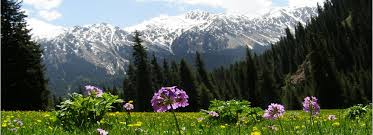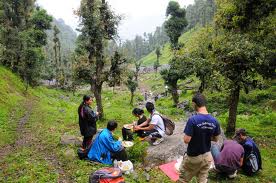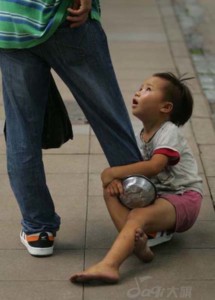 “The world is a book and those who do not travel, read only a page,” said St. Augustine hundreds of years ago. These words still ring true and for those of us, who long to walk along pine trees or gurgling rivers, they hold a special meaning.
“The world is a book and those who do not travel, read only a page,” said St. Augustine hundreds of years ago. These words still ring true and for those of us, who long to walk along pine trees or gurgling rivers, they hold a special meaning.
People throughout history have been travelling on foot. Some traveled for business, some for finding a new home and others, just for the sake of it.
Today, we call this travelling on foot as trekking or hiking and travelers from around the world dream of finding a beautiful place which has been untouched by anyone on earth. Although this dream seems far reaching, we must take comfort in finding a beautiful place which takes us not just closer to nature but, our own selves.
Uttarakhand is one such state in India which is famous for such beautiful trails. Every year, thousands of travelers visit this little Northern state to experience the wonders of the Himalayas. It is also a great place to start if you are a beginner and trekking high altitude seems a daunting task.
Nag Tibba is one of such easy treks in Uttarakhand which will not just introduce you to trekking, but bring you closer to the bounties of nature.
The Nag Tibba Trek
Before I start writing about the beauty of this trek, here are the quick facts:
Duration: 2 days- It is an ideal weekend trek which can be finished in 2 days provided you start really early.
Length: 8 kilometers from Panthwari Village and 12 kilometers from Dewalsari village.
Accommodation: There is no accommodation after the Dewalsari village so trekkers must carry their own tents, if planning to stay.
Important: You must obtain a pass from the Mussoorie Forest Office at Mussoorie for staying at the Forest guest house at Dewalsari, the only accommodation near Nag Tibba.
Food and water: It is strictly recommended that trekkers carry their own food as well as water since both are scarce during the Nag Tibba Trek.
Precautionary warning: Do not attempt this trek after evening as wild animals, especially bears, frequent these trails.
About the trek:
“Tibba” is a word for a hill in the local Pahari language and Nag Tibba refers to the ‘Serpent’s Hill’. The name, however, does not mean that the peak is home to snakes, but that a shrine dedicated to the Naga Devta (Snake God) is located here. Surrounded by stories and superstitions, this trek is taken between the months of September and April.
The trail takes the trekkers from pine forests over the hills to the place called ‘Nag Tibba’. This scarcely populated place provides some of the most enchanted and breathtaking views of the Bandarpoonch Peak, the Kedarnath Peak as well as the Gangotri peaks.
Trekkers, who is planning to stay at the site must trek further to the ‘Nagtiba top’ or “Jhandi”, which is an ideal campsite. As the night falls and stars glitter in the sky, the beauty of the mountain sprinkles magic everywhere.
How to get there:
The route from New Delhi to Nag Tibba :
New Delhi-Dehradun (240 kms) : Flight, buses, train and taxis available
Dehradun –Mussorie (30 kms): Local buses and taxi available
Mussoorie- Dewal sari (via Thatyud) (45 Kms) Local buses, Shared taxis, taxis
Dewalsari –NagTibba (12 kms): On foot
If you are planning the Panthwari route:
Mussoorie to Panthwari via Nainbag (around 60 kms): Local buses, shared taxis, taxi available.
Where to stay:
There are plenty of Hotels and lodges available in Dehradun as well as Mussoorie. In Dewalsari, the sole source of accommodation is the Forest guest house and tourist need to take a letter of permission to stay here. This letter is issued in Mussoorie by the Mussoorie Forest Office.
There are no refreshment units or accommodation available once you start the trek and it is wise to replenish your water bottles here.
What to take:
Carry a rucksack, which can be carried easily. You can also hire a guide who will carry the bags for you, but as they say, it is always better to carry your own burden! Also keep water bottles, torch, warm clothes, extra pair of socks, raincoat and something to eat.
General trekking tips:
1. Wear warm, but light clothes. Do not wear tight fitting clothes as they will make you feel uncomfortable once you start climbing the steep slopes.
2. Invest in good trekking shoes. Do not wear slippers or loose shoes that will not let you keep a firm grip on the ground.
3. Hire a guide if you are new to the place. This will not just save you time, but make your journey a lot more comfortable.
4. Don’t venture into the jungle at night. Even locals wait for the sun to rise and so should you.
5. Don’t litter the campsite. As a good trekker it is your duty to keep the mountains clean. Keep portable dustbin or poly bags to put the trash.
What to expect from the visit:
A trip to Nag Tibba will open new horizons for you as you prepare for more exotic and breathtaking treks. Do take pictures and keep a journal so that you can brag about the giant pine forest or the snow covered campsite once you’re back home.
Herman Melville, the famous author, quoted, “It is not down in any map; true places never are.” A trek on the Himalaya is meant to prove these words true.











